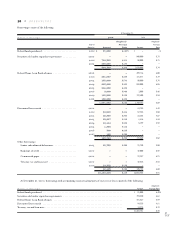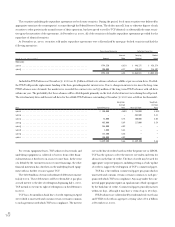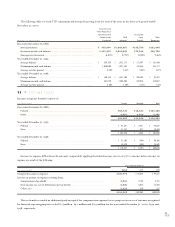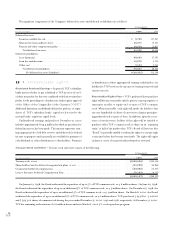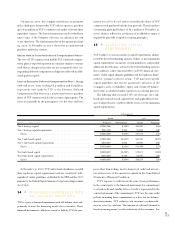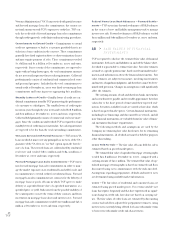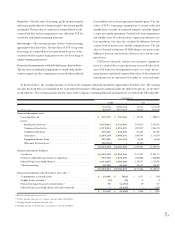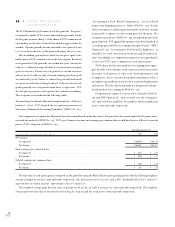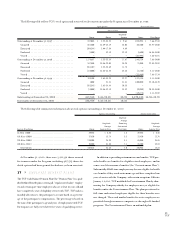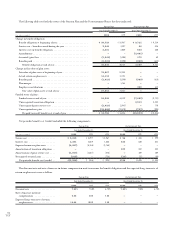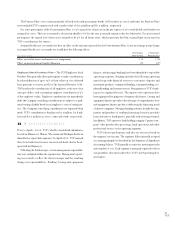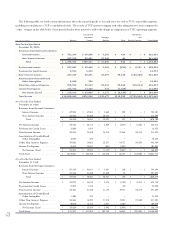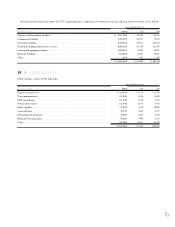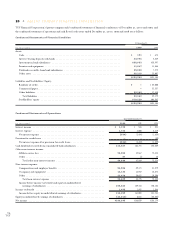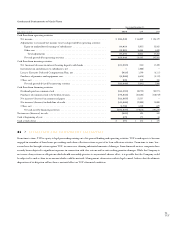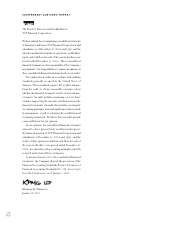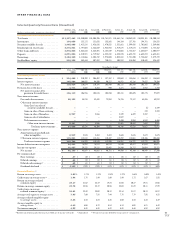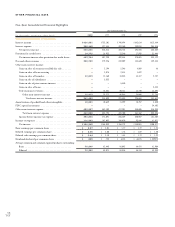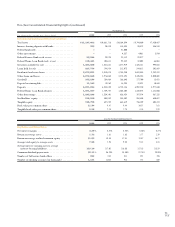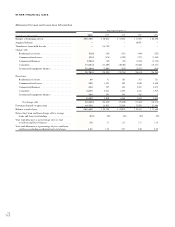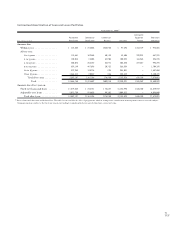TCF Bank 2000 Annual Report Download - page 63
Download and view the complete annual report
Please find page 63 of the 2000 TCF Bank annual report below. You can navigate through the pages in the report by either clicking on the pages listed below, or by using the keyword search tool below to find specific information within the annual report.
61
TCF
The Pension Plan’s assets consist primarily of listed stocks and government bonds. At December 31, 2000 and 1999, the Pension Plan’s
assets included TCF common stock with a market value of $11.3 million and $6.3 million, respectively.
For active participants of the Postretirement Plan, a 7.2% annual rate of increase in the per capita cost of covered health care benefits was
assumed for 2001. This rate is assumed to decrease gradually to 6% for the year 2005 and remain at that level thereafter. For most retired
participants, the annual rate of increase is assumed to be 4% for all future years, which represents the Plan’s annual limit on increases in
TCF’s contributions for retirees.
Assumed health care cost trend rates have an effect on the amounts reported for the Postretirement Plan. A one-percentage-point change
in assumed health care cost trend rates would have the following effects:
1-Percentage- 1-Percentage-
(In thousands) Point Increase Point Decrease
Effect on total of service and interest cost components . . . . . . . . . . . . . . . . . . . . . . . . . . . . . . . . . . . . $ 14 $ (13)
Effect on postretirement benefit obligation . . . . . . . . . . . . . . . . . . . . . . . . . . . . . . . . . . . . . . . . . . . . 132 (119)
Employee Stock Purchase Plan – The TCF Employees Stock
Purchase Plan generally allows participants to make contributions
by salary deduction of up to 12% of their salary on a tax-deferred
basis pursuant to section 401(k) of the Internal Revenue Code.
TCF matches the contributions of all employees at the rate of 50
cents per dollar, with a maximum employer contribution of 3%
of the employee’s salary. Employee contributions vest immediately
while the Company’s matching contributions are subject to a grad-
uated vesting schedule based on an employee’s years of vesting ser-
vice. The Company’s matching contributions are expensed when
made. TCF’s contribution to the plan was $2.7 million, $2.8 mil-
lion and $2.7 million in 2000, 1999 and 1998, respectively.
18 >BUSINESS SEGMENTS
Prior to April 1, 2000, TCF’s wholly owned bank subsidiaries
located in Minnesota, Illinois, Wisconsin and Michigan had been
identified as reportable segments. In April 2000, TCF merged
these four bank charters into one national bank charter head-
quartered in Minnesota.
Following the bank merger, certain management responsibil-
ities were realigned within the organization. Management report-
ing was revised to reflect the charter merger and the resulting
changes in responsibilities. Banking, leasing and equipment
finance, and mortgage banking have been identified as reportable
operating segments. Banking includes the following operating
units that provide financial services to customers: deposits and
investment products, commercial lending, consumer lending, res-
idential lending and treasury services. Management of TCF’s bank-
ing area is organized by state. The separate state operations have
been aggregated for purposes of segment disclosures. Leasing and
equipment finance provides a broad range of comprehensive lease
and equipment finance products addressing the financing needs
of diverse companies. Mortgage banking activities include the orig-
ination and purchase of residential mortgage loans for portfolio
loans and sales to third parties, generally with servicing retained.
In addition, TCF operates a bank holding company (“parent com-
pany”) that provides data processing, bank operations and other
professional services to the operating segments.
TCF evaluates performance and allocates resources based on
the segments’ net income. The segments follow generally accepted
accounting principles as described in the Summary of Significant
Accounting Policies. TCF generally accounts for intersegment sales
and transfers at cost. Each segment is managed separately with its
own president, who reports directly to TCF’s chief operating deci-
sion maker.


